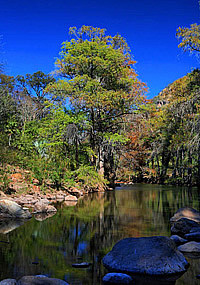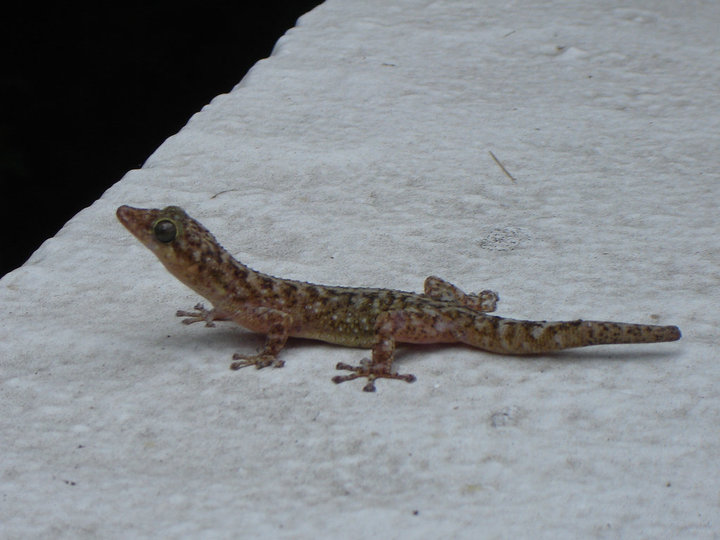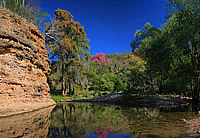My Ph.D research focuses broadly on issues of biodiversity and speciation mechanisms in Neotropical herpetofauna, particularly within Mexico. Mexico is considered to be one of the world’s biodiversity hotspots due to its geographic position intersecting the Nearctic and Neotropical realms. This diversity is further exemplified by Mexico’s dynamic geologic history, resulting in numerous mountain ridges, valleys, and plateaus, which, in turn, gave rise to an enormous array of habitat types ranging from arid, desert-like environments in the north through moist tropical rain forest in the south and east. 
More than one-half of Mexico’s climate can be classified as arid or semi-arid due to the presence of both the Sonoran and Chihuahuan Deserts in the northern part of the country. However, a large portion of Mexico’s west coast is occupied by tropical deciduous (TDF) or tropical dry forest. This habitat-type begins in the lowlands of southern Sonora, where the harsh, arid desert conditions of the Sonoran Desert give way to tropical thornscub and eventually lush TDF. This forest-type further extends through the Mexican states of Sinaloa, Nayarit, Jalisco, Michoacan, Guerrero, Oaxaca and Chiapas with other isolated stands scattered throughout the south and east. An extraordinary array of species are known to be endemic to the TDF of western Mexico including several species of insects, birds, plants, and most notably reptiles. However, severe habitat destruction is converting this forest landscape into agricultural fields for crops and livestock. Evidence suggests that this loss of habitat can have detrimental impacts to the genetic diversity within populations as well as the connectivity between them.
 My research looks specifically at genetic patterns in leaf-toed geckos of the genus Phyllodactylus. This group of Neotropical lizards encompasses a range mirroring that of TDF, extending from southern Sonora throughout the Pacific versant of Mexico through the west coasts of Central and South America. Species also inhabit coastal regions of northwestern South America, the West Indies, Baja California, several islands throughout the Gulf of California, and extreme southern California. Currently, there are approximately 50 known species and subspecies of Phyllodactylus, although this is presumably a gross underestimate due to the lack of comprehensive systematic investigations, most notably the inclusion of molecular data. Although these lizards can often be found in extraordinary abundance, little is known regarding the evolutionary relationships and biogeographic history of this diverse group of Neotropical reptiles, which in turn makes ecological, behavioral, and physiological investigations difficult to implement My research looks specifically at genetic patterns in leaf-toed geckos of the genus Phyllodactylus. This group of Neotropical lizards encompasses a range mirroring that of TDF, extending from southern Sonora throughout the Pacific versant of Mexico through the west coasts of Central and South America. Species also inhabit coastal regions of northwestern South America, the West Indies, Baja California, several islands throughout the Gulf of California, and extreme southern California. Currently, there are approximately 50 known species and subspecies of Phyllodactylus, although this is presumably a gross underestimate due to the lack of comprehensive systematic investigations, most notably the inclusion of molecular data. Although these lizards can often be found in extraordinary abundance, little is known regarding the evolutionary relationships and biogeographic history of this diverse group of Neotropical reptiles, which in turn makes ecological, behavioral, and physiological investigations difficult to implement
 Many members of Phyllodactylus are rupicolous, inhabiting rocky outcrops and exfoliating granitic slabs, usually in riparian habitats in TDF. Thus, it can be suggested that gene flow between populations may be significantly minimized, which in turn will lead to genetic divergence and eventually speciation. My research specifically tests several hypotheses regarding both historical and contemporary gene flow in populations of Phyllodactylus distributed throughout western Mexico. My research utilizes molecular phylogenetic, population genetic, and landscape genetic techniques to address a variety of questions pertaining to this diverse group of Neotropical lizards, in hopes of providing data necessary for the conservation and continued existence of these extraordinary creatures. It is further anticipated that these results will have broader implications for other co-distributed Neotropical taxa, reaffirming the region as one of Earth’s biodiversity hotspots and centers of endemicity. Many members of Phyllodactylus are rupicolous, inhabiting rocky outcrops and exfoliating granitic slabs, usually in riparian habitats in TDF. Thus, it can be suggested that gene flow between populations may be significantly minimized, which in turn will lead to genetic divergence and eventually speciation. My research specifically tests several hypotheses regarding both historical and contemporary gene flow in populations of Phyllodactylus distributed throughout western Mexico. My research utilizes molecular phylogenetic, population genetic, and landscape genetic techniques to address a variety of questions pertaining to this diverse group of Neotropical lizards, in hopes of providing data necessary for the conservation and continued existence of these extraordinary creatures. It is further anticipated that these results will have broader implications for other co-distributed Neotropical taxa, reaffirming the region as one of Earth’s biodiversity hotspots and centers of endemicity.
|
